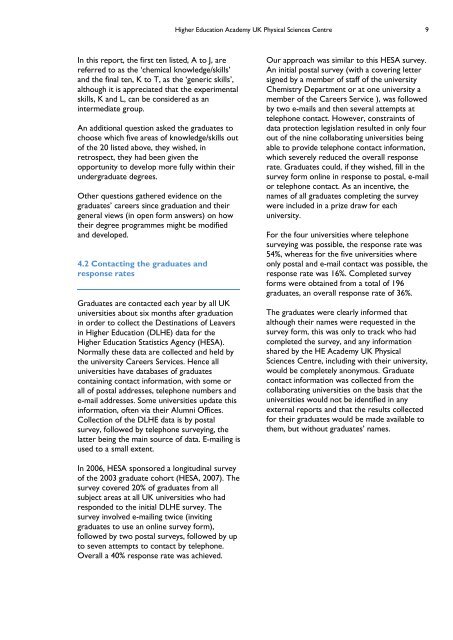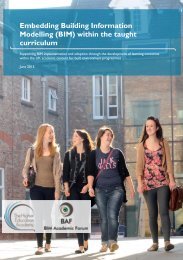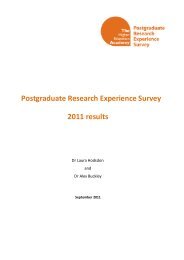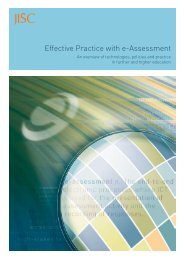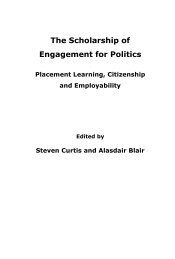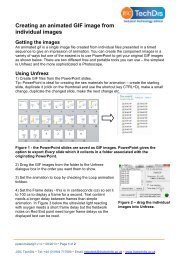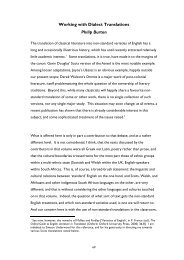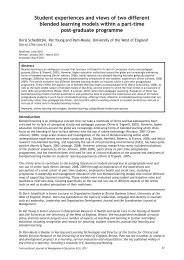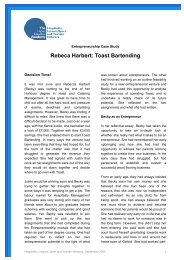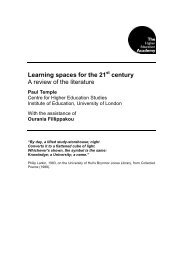Skills required by new chemistry graduates - Higher Education ...
Skills required by new chemistry graduates - Higher Education ...
Skills required by new chemistry graduates - Higher Education ...
You also want an ePaper? Increase the reach of your titles
YUMPU automatically turns print PDFs into web optimized ePapers that Google loves.
<strong>Higher</strong> <strong>Education</strong> Academy UK Physical Sciences Centre 9<br />
In this report, the first ten listed, A to J, are<br />
referred to as the ‘chemical knowledge/skills’<br />
and the final ten, K to T, as the ‘generic skills’,<br />
although it is appreciated that the experimental<br />
skills, K and L, can be considered as an<br />
intermediate group.<br />
An additional question asked the <strong>graduates</strong> to<br />
choose which five areas of knowledge/skills out<br />
of the 20 listed above, they wished, in<br />
retrospect, they had been given the<br />
opportunity to develop more fully within their<br />
undergraduate degrees.<br />
Other questions gathered evidence on the<br />
<strong>graduates</strong>’ careers since graduation and their<br />
general views (in open form answers) on how<br />
their degree programmes might be modified<br />
and developed.<br />
4.2 Contacting the <strong>graduates</strong> and<br />
response rates<br />
Graduates are contacted each year <strong>by</strong> all UK<br />
universities about six months after graduation<br />
in order to collect the Destinations of Leavers<br />
in <strong>Higher</strong> <strong>Education</strong> (DLHE) data for the<br />
<strong>Higher</strong> <strong>Education</strong> Statistics Agency (HESA).<br />
Normally these data are collected and held <strong>by</strong><br />
the university Careers Services. Hence all<br />
universities have databases of <strong>graduates</strong><br />
containing contact information, with some or<br />
all of postal addresses, telephone numbers and<br />
e-mail addresses. Some universities update this<br />
information, often via their Alumni Offices.<br />
Collection of the DLHE data is <strong>by</strong> postal<br />
survey, followed <strong>by</strong> telephone surveying, the<br />
latter being the main source of data. E-mailing is<br />
used to a small extent.<br />
Our approach was similar to this HESA survey.<br />
An initial postal survey (with a covering letter<br />
signed <strong>by</strong> a member of staff of the university<br />
Chemistry Department or at one university a<br />
member of the Careers Service ), was followed<br />
<strong>by</strong> two e-mails and then several attempts at<br />
telephone contact. However, constraints of<br />
data protection legislation resulted in only four<br />
out of the nine collaborating universities being<br />
able to provide telephone contact information,<br />
which severely reduced the overall response<br />
rate. Graduates could, if they wished, fill in the<br />
survey form online in response to postal, e-mail<br />
or telephone contact. As an incentive, the<br />
names of all <strong>graduates</strong> completing the survey<br />
were included in a prize draw for each<br />
university.<br />
For the four universities where telephone<br />
surveying was possible, the response rate was<br />
54%, whereas for the five universities where<br />
only postal and e-mail contact was possible, the<br />
response rate was 16%. Completed survey<br />
forms were obtained from a total of 196<br />
<strong>graduates</strong>, an overall response rate of 36%.<br />
The <strong>graduates</strong> were clearly informed that<br />
although their names were requested in the<br />
survey form, this was only to track who had<br />
completed the survey, and any information<br />
shared <strong>by</strong> the HE Academy UK Physical<br />
Sciences Centre, including with their university,<br />
would be completely anonymous. Graduate<br />
contact information was collected from the<br />
collaborating universities on the basis that the<br />
universities would not be identified in any<br />
external reports and that the results collected<br />
for their <strong>graduates</strong> would be made available to<br />
them, but without <strong>graduates</strong>’ names.<br />
In 2006, HESA sponsored a longitudinal survey<br />
of the 2003 graduate cohort (HESA, 2007). The<br />
survey covered 20% of <strong>graduates</strong> from all<br />
subject areas at all UK universities who had<br />
responded to the initial DLHE survey. The<br />
survey involved e-mailing twice (inviting<br />
<strong>graduates</strong> to use an online survey form),<br />
followed <strong>by</strong> two postal surveys, followed <strong>by</strong> up<br />
to seven attempts to contact <strong>by</strong> telephone.<br />
Overall a 40% response rate was achieved.


